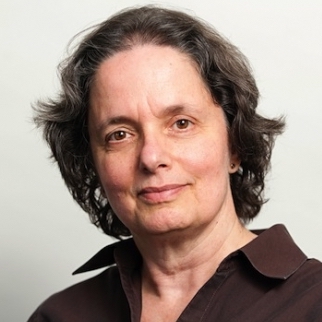“We’re making a movie about ourselves!”
That’s what then-Disney Studios’ animation chief Peter Schneider told his bosses back in the early 1990s, when the gang in the storied halls of cartoons and camp were cooking up “The Lion King,” soon to be another Disney box office and award-winning triumph—onscreen and then, much later, onstage.
What Schneider, the producer of the new documentary “Waking Sleeping Beauty” meant was, the testosterone-filled fight for power in the “Lion King’s” story, where lions roar and collaborate with hyenas in a fight for the throne – the “circle of life,” they say – was also a mirror of the power struggles within Disney’s own dynasty.
Now an independent producer, Schneider has once again made a movie “about ourselves,” in “Waking Sleeping Beauty,” chronicling the heyday of Disney animation from 1984-1994. The film screened tonight for “friends and family” in a packed El Capitan theatre in Hollywood.
“Waking Sleeping Beauty’s” general release, producer Schneider and director Don Hahn announced from the stage, won’t be until next March, but the early buzz in the theater was very happy – that the real story had now, finally, been told. (Hahn makes his directorial debut here – and he’s very much in the film as its narrator—he was the Oscar-nominated producer of “The Lion King” and of “Beauty and the Beast.”)
This film covers a world that seems like we know it, but really don’t. It moves beyond the celebrity-driven coverage of million-dollar catfights between Michael Eisner, Jeffrey Katzenberg, and, later, Michael Ovitz (who is never mentioned in “Waking,” since he had no bearing on the film’s era). It focuses on and captures the heat and the hilarity of an office where dancing in the halls was normal, every meeting seems to have been made into a home movie, and work took place ’round the clock, with meetings called regularly at 8 a.m.—on a Sunday. It was a time of enormous creativity, a time when beauties and beasts linked arms with mermaids, genies and more.
All of the footage is vintage, though the voice-over interviews are mostly new.
From the film, it looks like a lot of hard work went on, but also amazing, even surprising collaborations between new and veteran talents – and there was also a whole lot of fun. Eye-scratching for credit aside—much of that took place up at the top of the administration building over in Burbank, where those poor dwarfs are still struggling to hold up the roof.
Many of the cast of characters were Jews, it might be added, for purposes of this blog. Schneider, for one, a driven ambitious and stage-trained son of a Holocaust survivor, who helped to turn the languishing animation studio into a goldmine by bringing in the culture and creativity of the theater world. Eisner, for another, looking surprisingly lovable and abashed, here, and Katzenberg, who saw no limelight he couldn’t find a way into.
But the film is also a tribute to other key players, like the late Frank Wells, who was the glue that kept it together until he died, tragically, at 62 in a helicopter crash in 1994. And Roy Disney, whose personal quest and vision it was to revitalize the one-languishing brand that first made his Uncle Walt so famous.
“Waking Sleeping Beauty” is a terrific film for anyone who’s seen the classic movies of 1984-1994 – and who hasn’t? My now-14-year-old daughter and my husband joined me for the screening, and all of us have seen each of those movies, what, hundreds of times? And it’s great to see again even the short snippets from them interspersed between the documentary footage, as we come to understand the climate in which they were made.
“Waking Sleeping Beauty,” a reference to the revitalization of the medium and the studio, offers an irresistible peek into a place were any kind of artistry seemed possible—it allows us to see Angela Landsbury singing her heart out in a sound room in her role as a teapot, and genie Robin Williams cutting loose having just been released from his lamp. It’s also a celebration of far less-known artists, the ones who drew the characters, again and again and again.
Genius casting, brilliant drawing, the money to use new technology and the smarts to be ahead of the game all made this golden era happen.
Before the film rolled tonight, Schneider and Hahn said as introduction that they made their film to tell a story that many journalists have written about, but no one’s gotten right.
Well, we’ll probably learn from the bloggers who were present (at the time in the studio, and in the theater tonight) whether Schneider and Hahn sugarcoated it, or have, in fact, captured the real magic and tension of the time.
But one thing’s for sure, this movie makes you wish you worked in a place like that.























 More news and opinions than at a Shabbat dinner, right in your inbox.
More news and opinions than at a Shabbat dinner, right in your inbox.